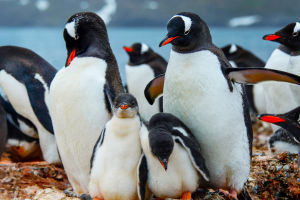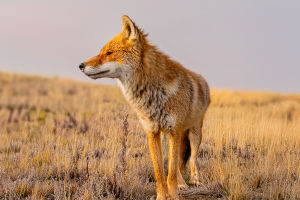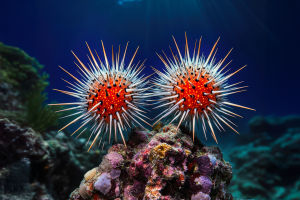Have you ever wondered how penguins manage to raise their fluffy chicks in the freezing winds of Antarctica?
We often see images of these determined birds huddled together on icy plains — but the process behind their survival is even more fascinating than it looks.
Let's explore together how penguins use remarkable strategies to thrive in one of the harshest environments on Earth.
A Life Built for the Cold
First, let's understand why penguins can even survive where other animals cannot.
Penguins have evolved several physical adaptations:
• Dense feathers: Penguins have a thick layer of waterproof feathers that trap warm air close to their bodies.
• Blubber layer: Beneath their skin, a thick insulating layer helps retain body heat.
• Counter-current heat exchange: Special blood vessels in their flippers and legs minimize heat loss.
These adaptations form the first line of defense against the brutal Antarctic winter — which can reach temperatures below -50°C!
The Emperor Penguin's Unique Parenting
Among the 18 penguin species, Emperor Penguins are the true masters of extreme parenting.
Unlike most birds, Emperor Penguins breed during the Antarctic winter. Here's how they do it:
• After mating, the female lays a single egg and carefully transfers it to the male's feet.
• The male then covers the egg with a warm fold of skin called a brood pouch.
• While the female returns to the sea to feed, the male remains on land for about two months — during the coldest time of year.
During this period, the males fast completely, relying on stored energy while keeping the egg warm at about 36°C — even as the air around them can be -40°C or colder.
The Power of Huddling
How do male penguins survive these freezing conditions for weeks?
The answer lies in their remarkable huddling behavior. According to Dr. Daniel P. Zitterbart, who studies penguin dynamics, Emperor Penguins form tightly packed huddles where individuals take turns moving between the warmer center and the colder outer edge.
• In a huddle, temperatures can rise to a cozy 20°C, dramatically reducing heat loss.
• Penguins shift positions every few minutes, ensuring equal warmth for all.
This cooperative behavior showcases not only physical adaptation but also social intelligence — a powerful tool for survival.
Chick Care After Hatching
Once the chick hatches, the challenges continue.
• The male feeds the chick with a secretion called crop milk, produced in his esophagus, until the female returns.
• When the mother comes back, she takes over feeding duties while the male regains his strength.
Both parents continue to care for the chick through the harshest months. They alternate trips to the sea, ensuring a constant food supply while shielding the chick from the cold and predators.
Why This Strategy Works
You might wonder — why breed in such terrible conditions?
Scientists believe that timing is key. By hatching during mid-winter, penguin chicks grow stronger by the time spring arrives. This allows them to fledge and enter the sea when food is most abundant, improving their chances of survival.
Most Penguin ecologists emphasize that this delicate timing is critical — any disruption, such as delayed breeding or ice instability, can have serious consequences for chick survival.
What We Can Learn
Penguins' parenting in the cold teaches us valuable lessons:
• Adaptability: Success often depends on creative strategies for coping with extreme challenges.
• Teamwork: Survival can hinge on collective behavior and mutual support.
• Resilience: Persistence in difficult conditions leads to success.
These insights remind us that nature is full of wisdom we can apply in our own lives.
Final Thoughts: Tiny Chicks, Big Lessons
So, how do penguins raise their chicks in the freezing cold? Through a perfect blend of physical adaptations, cooperative behavior, and finely tuned timing.
Next time you see a photo of a penguin cradling its chick on the ice, remember the incredible effort and teamwork behind that moment.
Now it's your turn, Lykkers — what animal survival stories inspire you the most? Share your favorites with us — nature has endless wonders to explore together!


